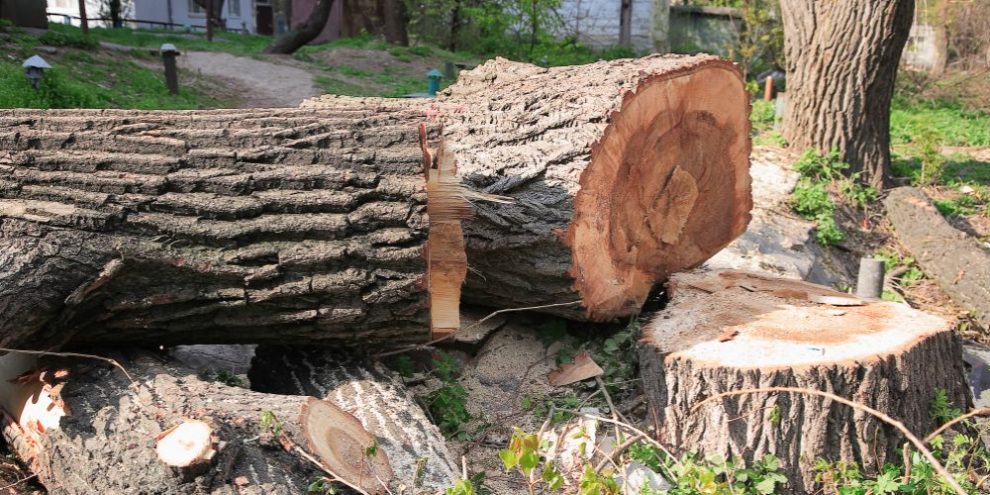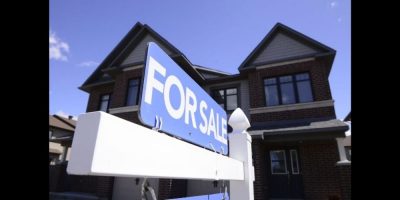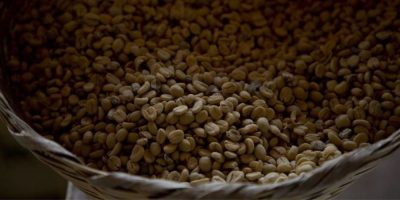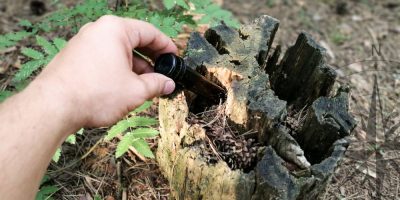
This Barrie 360 content is brought to you by Canadian Equipment Outfitters
A healthy and mature tree is something to be proud of. Not only is it lovely to look at but a well-placed tree can increase property value, reduce heating/cooling expenses, and help with privacy. That’s why it can be heartbreaking to see a tree in distress.
While sometimes cutting down your trees is the only choice, there are many situations when a good pruning or trimming may be all your tree needs.
Let’s take a look at some easy ways to tell that it is time to consider cutting down, trimming, or pruning your trees.
Signs That Your Trees Need Trimming, Pruning, Or Cutting Down
Trees are complex. Sometimes a seemingly healthy tree can come crashing down unexpectedly. Other times, a tree that looks like it is ready to fall, can flourish for decades with the right care.
To help you decide whether or not it’s time to trim, prune, or remove a tree from your yard, consider these signs and factors.
PRUNING VS TRIMMING: Trimming and pruning are often used interchangeably but there is a difference. Trimming is done for aesthetics and to shape a plant. It can also help foliage grow thicker and faster. Pruning is done to improve overall health. This includes removing dead, diseased, and damaged branches. Both pruning and trimming are important but each requires different tools.
1. Dead Branches

Dead branches are generally easy to spot as they usually have missing or dead foliage. It’s also common for dead branches to have little to no bark. If you see dead branches in your tree, they should be removed. Dead branches are not only dangerous for you and your property. They can also negatively affect your tree and open it up to pests and disease.
If there’s an excessive amount of dead wood, it could be a sign of increasing decay and may mean you need to remove it.
2. Overcrowding

When trees and branches do not have enough space to expand and absorb sunlight, their growth can get stunted. If you have multiple trees that are very close together, you should consider thinning them out.
You also want to inspect the branches of each tree. For deciduous trees, winter is the best time to do this as there are no leaves blocking your view.
While standing under your tree, look up through the branches. If you can see little sky through the branches, you need to prune your tree. Similarly, if you see any branches that are almost rubbing together or creating a tight V-shape, they should be thinned. As the branches grow, they will expand into one another. This can increase the risk of breaking and decay.
3. Infestation and Disease

Many different fungi, pests, and diseases can affect your tree. To help you identify problems sooner, it’s a good idea to be up-to-date on what commonly affects trees in your area.
Typically fungi, like mushrooms, are a sign of rot inside the tree. The faster the fungus grows, the more concerned you should be.
Pests are more difficult to spot as they do their work inside the tree. That being said, there are some signs you can look for on the outside of your tree. This includes holes, signs of boring, chewed or holey foliage, discoloured or flakey bark, wood dust, or frass (pet and insect poop). If you see any of this activity on or around your tree, you will want to investigate further.
When it comes to disease, there are some common symptoms to watch out for. These include:
- Orange, yellow, black, or brown spots on leaves
- Discoloured leaves or needles - usually yellow or brown
- Stunted leaf growth
- Early leaf drop
- The edges of leaves are turning brown
- Round/oval areas of dead sunken bark
- Leaves that are black and look like they have been burned
- White powder-like substance on leaves
How much of the tree you need to remove will depend on the extent of the problem and whether it could affect other trees on your property.
4. Cracks And Hollows

Cracks and hollows can open your tree up to infection, pests, and decay. The good news is, when a tree has a cavity, it will try to heal itself.
If the wood around the cavity is solid, there may be hope. If the hollow or crack is large or the cavity appears to be rotting, you may have to remove the branch or tree. You can also help trees thrive by cutting down branches with large cavities, even before they begin to heal.
5. Root Rot

Roots can suffer from a problem called root rot. But because the roots are in the ground, it may be hard to spot.
If you have a lot of fungus growing at the base of the tree, you likely have an issue with your roots. Leaves falling off from the inside of the tree before the outside is also a sign that there may be a problem.
Roots can also be at risk if:
- The roots are exposed and being damaged by yard equipment
- The roots have been covered in 3 or more inches of soil
- Vines are growing over the base of the tree
- The area around the tree was recently excavated
- Roots have been cut
Some of these can be more easily remedied, like removing vines or excess soil. Others can cause more permanent damage, which will shorten the life of your tree.
6. Leaning

Some trees grow with a natural lean. If the tree grew on an angle, the lean may be less of an issue. Especially if it is leaning away from anything of value and is a hardwood like an oak.
If, however, your tree has a sudden lean it didn’t have before, that can be a sign of root rot, as well as storm or wind damage. In these cases, removal may be the best choice.
PRO TIP: Trees leaning to the east are more likely to fall due to Ontario’s westerly winds.

7. Codominance

A codominant tree is a tree with two or more trunks. Similarly, a codominant stem is when two or more main stems are emerging from the same spot on the trunk. Unlike trees with a single stem or trunk, these trees are more likely to split over time.
This can cause reciprocal damage if the branch or tree were to hit something. If the section that falls off is large enough, the remaining tree may also die as it will be unable to heal itself.
8. Size

Some trees will never experience any of the above issues. They may be so healthy that they continue to grow and flourish until they become disruptive. When your tree becomes too large, it may be time to prune it back or remove it.
Some common reasons for pruning or cutting down trees that show no problem signs are that the tree is:
- Touching your house or another building
- Too close to a utility line (your utility provider should offer services to remove problem limbs)
- Blocking the view or casting too much shade
- Heavier on one side than the other (can cause the tree to split or lean)
- Leaving sap, needles, seeds, or other unwanted droppings on cars, solar panels, etc.
- Growing into the neighbours’ property
- Stunting the growth of other trees or plants
When it comes to trees, knowing when to trim, prune, or remove them is essential. Signs like dead branches, overcrowding, infestations, diseases, cracks, root problems, leaning, codominance, and size issues are indicators that need attention. Acting promptly, whether through pruning or removal, ensures a safer and more beautiful landscape. Balancing aesthetics and safety keeps your environment harmonious and risk-free.
RELATED: 5 important steps you don't want to miss when winterizing your cottage ...







